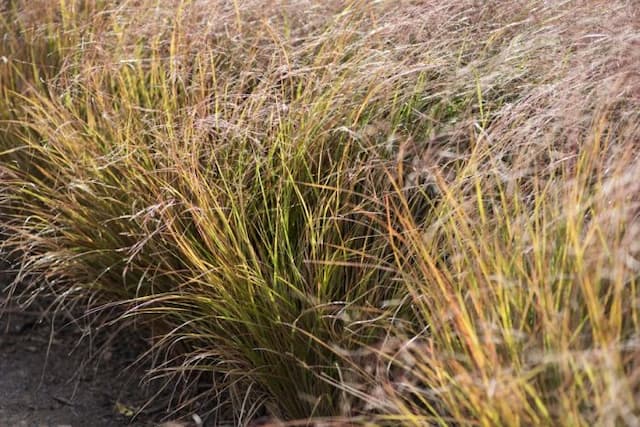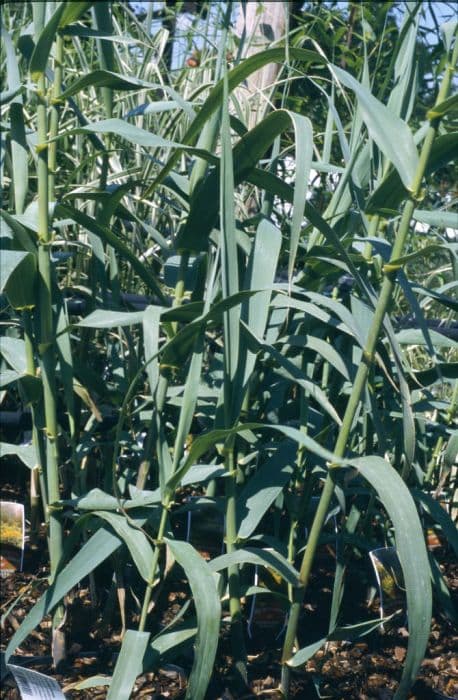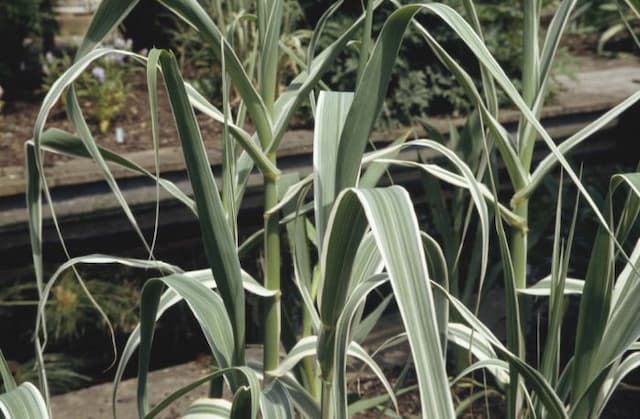Fountain Grass Pennisetum 'Fairy Tails'

ABOUT
'Fairy Tails' is an ornamental grass that is appreciated for its elegant and graceful appearance. It features a clumping habit, with arching, slender green leaves that sway gently in the breeze. During the warmer months, this plant boasts fluffy, feathery flower plumes that emerge above the foliage. The plumes are initially a soft purple or lavender shade, and as they mature, they transition to a tawny color, creating a lovely contrast against the green leaves. The flower spikes are narrow and bottlebrush-like, contributing an airy texture and movement to the garden. Over the course of the growing season, 'Fairy Tails' is a dynamic and visually attractive plant that brings a soft, whimsical feel to landscapes.
About this plant
 Names
NamesSynonyms
Fairy Tails Fountain Grass, Fairy Tails Pennisetum
Common names
Pennisetum 'Fairy Tails'.
 Toxicity
ToxicityTo humans
The plant commonly known as Fountain Grass is generally not considered toxic to humans. However, as with any plant, individual sensitivity may vary, and if any part of the plant were ingested in large quantities, it could potentially cause stomach irritation or discomfort.
To pets
Fountain Grass is not typically listed as a toxic plant for pets. While it may not be specifically poisonous, ingestion of plant material can potentially cause mild gastrointestinal upset in some animals due to the physical nature of grasses. It's always advisable to monitor pets and prevent them from eating ornamental grasses to avoid any potential digestive issues.
 Characteristics
CharacteristicsLife cycle
Perennials
Foliage type
Deciduous
Color of leaves
Green
Flower color
Tan
Height
4-5 feet (1.2-1.5 meters)
Spread
2-3 feet (0.6-0.9 meters)
Plant type
Grass
Hardiness zones
6
Native area
Africa
Benefits
 General Benefits
General Benefits- Ornamental Appeal: Adds visual interest to gardens with its feathery flower plumes and graceful foliage.
- Drought Tolerance: Once established, it requires minimal water, making it suitable for xeriscaping and water-wise gardens.
- Low Maintenance: Requires little care beyond occasional trimming, making it ideal for gardeners seeking minimal upkeep.
- Fast Growth: Grows quickly to establish itself and fill in garden spaces, providing a full, lush appearance.
- Wildlife Attraction: Attracts birds and beneficial insects, increasing biodiversity in the garden.
- Durable: Tolerates a variety of soil types and can withstand urban pollution.
- Seasonal Interest: Offers year-round interest with changing foliage and flower colors through the seasons.
- Privacy: Can be used as a natural screen or hedge to create privacy in garden spaces.
- Erosion Control: Its root system can help stabilize soil, preventing erosion on slopes.
- Non-Invasive: Selected cultivars, like 'Fairy Tails', are bred to be non-invasive, preventing unwanted spreading in the garden.
 Medical Properties
Medical PropertiesThis plant is not used for medical purposes.
 Air-purifying Qualities
Air-purifying QualitiesThis plant is not specifically known for air purifying qualities.
 Other Uses
Other Uses- Pennisetum 'Fairy Tails' can be used as a natural dye source, providing colors for textiles and crafts from the plant's parts.
- The dried plumes of Fairy Tails are often utilized in floral arrangements or as standalone bouquet features for their textured, ornamental appeal.
- Fairy Tails's dense growth can be effective in preventing soil erosion, as it establishes strong root systems that hold the soil together.
- The plant can serve as a privacy screen or living fence when planted in a row because of its height and dense clumping habit.
- Fairy Tails can be used in xeriscaping, a landscaping method that reduces or eliminates the need for supplemental water from irrigation.
- With its tall and elegant structure, Fairy Tails serves as a natural guidepost or marker within a garden or trail setting.
- The grass clippings from cutting or trimming Fairy Tails can be repurposed as mulch to suppress weeds and retain soil moisture in garden beds.
- The seeds of Fairy Tails can be a food source for birds, making the plant a beneficial addition to wildlife gardens.
- In soundscaping, the rustling sounds of Fairy Tails's foliage and plumes can be used to create a calming and serene auditory experience in the garden.
- The plant's unique texture and form can inspire artists and photographers, making it a subject for various visual arts.
Interesting Facts
 Feng Shui
Feng ShuiThe Fountain Grass is not used in Feng Shui practice.
 Zodiac Sign Compitability
Zodiac Sign CompitabilityThe Fountain Grass is not used in astrology practice.
 Plant Symbolism
Plant Symbolism- Elegance - The Pennisetum 'Fairy Tails', commonly referred to as Fountain Grass, often symbolizes elegance due to its graceful, arching form and feathery flower plumes that sway delicately in the breeze.
- Illumination - As Fountain Grass catches the sunlight with its reflective foliage and flowers, it symbolizes illumination and the ability to bring light to situations or to one's life.
- Prosperity - The lush growth and prolific seed production of Fountain Grass is symbolic of prosperity and the idea of abundance and fertility.
- Resilience - Being a sturdy and adaptable grass that can thrive in a variety of conditions, it symbolizes resilience and the capacity to endure and overcome challenging circumstances.
- Transition - The seasonal changes seen in Fountain Grass, from lush green in spring and summer to golden brown in autumn, can symbolize transition and the passage of time.
 Water
WaterFountain Grass should be watered deeply once a week, allowing the soil to dry out slightly between watering sessions. It's important to avoid overwatering, as this can lead to root rot. In terms of amount, aim for about 1 to 1.5 gallons per watering session for an established plant in moderate climates. During hot, dry spells, you might need to water twice per week, while in cooler temperatures or rainy seasons, you can reduce the frequency.
 Light
LightFountain Grass thrives in full sun, so it's best to place it in a spot where it can receive a minimum of 6 hours of direct sunlight daily. It can tolerate some light shade, but too much shade can cause it to grow poorly and reduce flowering.
 Temperature
TemperatureFountain Grass prefers warm conditions and does well in temperatures ranging from 60 to 90°F. It can survive down to about 20°F, but it's not frost-hardy and should be protected from freezing temperatures to prevent damage to the plant.
 Pruning
PruningFountain Grass should be pruned to remove old foliage and encourage fresh growth. The best time for pruning is late winter to early spring, before new shoots emerge. Cut back the grass to about 4-6 inches from the ground annually. This helps maintain its shape and promotes healthier, more vigorous plants.
 Cleaning
CleaningAs needed
 Soil
SoilFairy Tails Fountain Grass thrives in well-draining soil enriched with organic matter, with a pH range from 5.5 to 7.2. A mix of two parts loam, one part compost or peat, and one part sand or perlite forms ideal growing conditions.
 Repotting
RepottingFairy Tails Fountain Grass, being a perennial ornamental grass, doesn't typically require frequent repotting. It is best to repot or divide the clumps when they become overcrowded, which may occur every 3-4 years.
 Humidity & Misting
Humidity & MistingFairy Tails Fountain Grass is tolerant of a wide range of humidity levels and prefers average ambient humidity found in outdoor conditions without the need for special humidity adjustments.
 Suitable locations
Suitable locationsIndoor
Ensure full sun, well-draining soil, and minimal watering.
Outdoor
Plant in full sun, amend soil with compost, water sparingly.
Hardiness zone
5-9 USDA
 Life cycle
Life cycleThe life cycle of the 'Fairy Tails' Fountain Grass (Pennisetum 'Fairy Tails') starts with seed germination, where under the right conditions of warmth and moisture, the seed sprouts and the plant begins to grow. The seedling stage follows, characterized by the development of the plant's initial roots and shoots. As the plant matures, it enters the vegetative stage, during which it develops a clump of narrow, arching leaves, and its root system becomes more established. This ornamental grass reaches the flowering stage during late summer to fall when it produces feathery, bottlebrush-like flower spikes that rise above the foliage and may last until winter. After flowering, as temperatures drop in late autumn, the plant enters dormancy, with the foliage often taking on a brown hue, signaling the end of the annual growth cycle. The cycle begins anew with the return of warm weather in spring, or the plant may self-seed and start new plants, thus continuing its life cycle.
 Propogation
PropogationPropogation time
Early Spring
Pennisetum 'Fairy Tails', commonly known as Fairy Tails Fountain Grass, is typically propagated through division, which is considered the most popular method for this perennial grass. The ideal time for dividing this plant is in the spring, as the new growth starts to appear. To propagate by division, carefully dig up an established clump of Fairy Tails Fountain Grass, and using a sharp spade or knife, split the clump into smaller sections, ensuring each section has roots and a few shoots. These sections can then be replanted immediately in well-prepared soil, spaced about 18 to 24 inches apart (approximately 45 to 60 centimeters). Regular watering will help the new divisions to establish and start new growth.









